I greet you this week as a newly christened 49-year-old man bearing a resuscitated piece I wrote for my blog back in 2011. The blog is long gone now and I didn’t have the files for this piece anymore but, thanks to the Internet Wayback Machine, I found the desiccated remains and had enough fun reading it again that I don’t feel ashamed sharing it anew now that I am both a totally different and totally the same person from my 36-year-old incarnation.
First a quick survey of current reading:
I’m almost finished with Dead Man’s Walk, the Lonesome Dove prequel I mentioned last week. This one rivals the Book of Job or Greek myth in the sheer brutality of the trials it puts its characters through as they cross the plains and are beset by Comanches, the Mexican army, cold, starvation, and a fucking grizzly bear. But even as scalps are taken and prairie fires are set, the laconic wit remains in generous supply. I love it, and I already have the second prequel, Comanche Moon, on deck.
Kubrick: An Odyssey is the new biography of Stanley K. I’m being characteristically impatient with the childhood and adolescence passages of this life, and am about to skip ahead to what I really care about: the making of Barry Lyndon. Everything else is secondary to me.
Enjoy Your Symptom: Jacques Lacan in Hollywood and Out by Slavoj Zizek…. Here we go again.
And I’ve just started The Fabulous Sylvester: The Legend, the Music, the Seventies in San Francisco by Joshua Gamson. I can’t pass judgement yet since I’m barely one page in, but the topic of this iconic disco hero, as well as the doomed decadence of bygone countercultures, compels me strongly enough that it will have to be abysmally written (and it clearly isn’t) to lose me.
And now, like Lazarus, here rises the dead in the form of my decade-old musing ‘n riffing on the topic of photos of writers…
The photos of novelists on the back covers or inside flaps of their own books generally default to one of two modes. There’s the Bemused (“Gosh golly, you want to take a picture of me? I mean, I’m just, you know, a novelist. But, well… okay. How’s this?”). Result: The facial equivalent of mumbling “shucks” while doing a full-shouldered shrug. Then there’s the Glare (“Hello. I have just emerged from the cold stone tower in which I have spent a year wearing a hairshirt and eschewing all carnal pleasure. I have stared through time and decoded the dissolution of the American marriage and/or family for you so that you might better understand the foibles of your weak species”). Result: The pout of an impotent ape that’s been backed into a corner.
There’s also a small subsection of author photos that are made in a giggly spirit of lighthearted whimsy, or maybe an arch spirit of faux diffident “Famous? Who, me?” vibes, best exemplified by that famous Dave-Eggers-with-dog portrait. I don’t feel like getting into that here. I don’t care for it.
Instead, a selection from my favorites. Some of these were actually used as portraits in novels and some should have been.
Here is the best author photo of all time. It’s on the back of the first hardcover edition of Misery. Yes, the entire back cover. Stephen King is a coiled spring of cocaine psychosis here. Total compacted rage and paranoia. Read the part where Annie chops off Paul’s leg with an ax, then flip the book over and lock eyes with King for a second. If we could add a soundtrack of discordant horns and violin-stabs to this photo… Gesamtkunstwerk.
This is the photo used inside David Foster Wallace’s The Pale King. Not much to say here except that it’s heartbreaking. He looks so tired and, like most DFW fans, I read into it too much and find something like, “You see? Do you understand” in his expression here. (Real quick: Something about The Pale King is that while its topic—partially—is boredom, its method—also partially—is boredom too. So it’s theory and practice, textbook and workbook. If you plow into the parts that are potentially torturously boring, which are actually more like exercises, and you find the rhythm in them and stop worrying about how much longer the passage can possibly continue, then you get inside it and something kind of transcendent happens, and the theme of the book becomes something real that you experience.)
Here is Isaac Babel photographed at a point somewhere between being arrested by the Soviet secret police and being tortured and executed by them. If the men who make these goofy torture-porn horror films now could distill the essence of the way this photograph makes me feel, their movies would actually be scary and mean something.
Just as a palliative, here is Babel as a free man. I understand why he didn’t stay in Paris, but I wish he had.
Renata Adler by Richard Avedon. If I were the boss of anything, I’d want her to be my Sergeant-at-arms.
Donna Tartt, here basically being Sherilyn Fenn as a butch-goth-dom. I want her to beat my knuckles with a metal ruler while I struggle to play Chopin’s Études on the piano.
Continuing the thread of butch-doms, this is Patricia Highsmith in her youth, before she butched out. Imagine if this were on the back covers of the Ripley novels.
Flannery O’Connor at home with her lupus, her crutches, and one of her peacocks. No commentary needed here, except that I wonder what peacock tastes like.
And here is the partial saga of Richard Yates portraits. The left is from the first edition of Eleven Kinds of Loneliness (1962). As Blake Bailey writes in his great biography, Yates was self-conscious about his looks. He felt like his lips were too sensual and, therefore, womanly. He wanted to appear tough in the photo for this book. Does he? I don’t know. The middle portrait is from the first edition of The Easter Parade (1976). This is my favorite of his novels—it really is the best. Yates grew the beard so that the lip problem would become a non-issue. He kept it for the duration of his life. On the right is the portrait from the first edition of Liars in Love (1981). I think the beard looks better aged.
Here we see Yates very close to the end of his life, photographed in Florida by his daughter. He never would have allowed this picture into a book (smiling was verboten in his author portraits), but it’s my favorite photo of him.



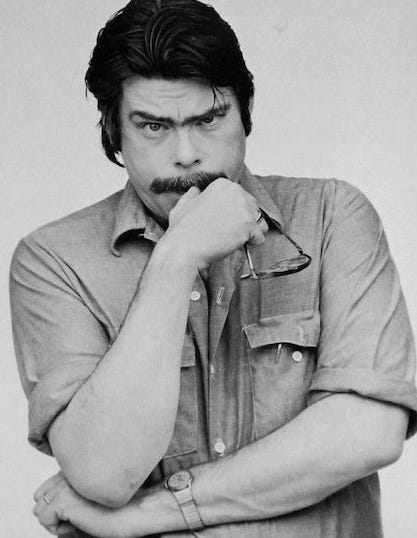
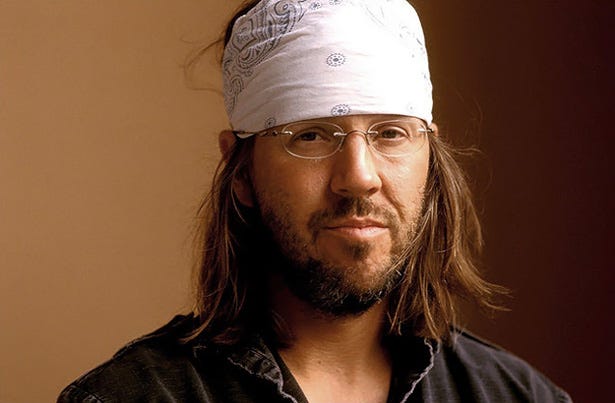

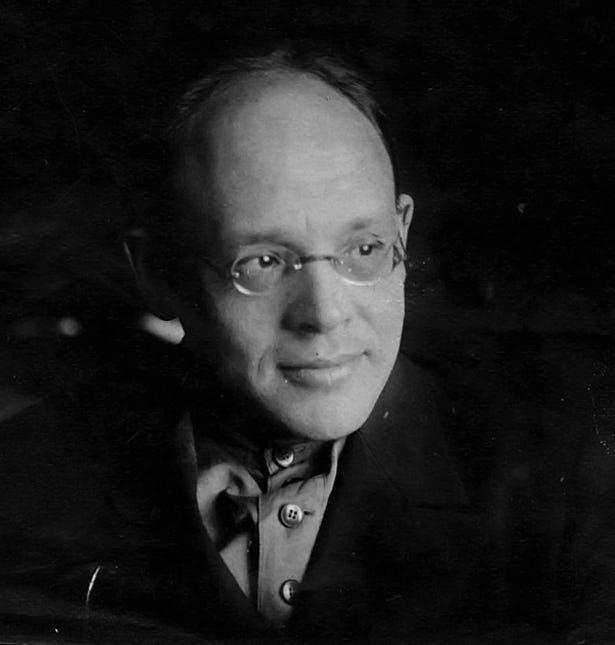
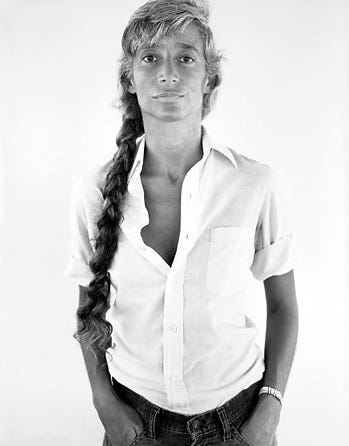

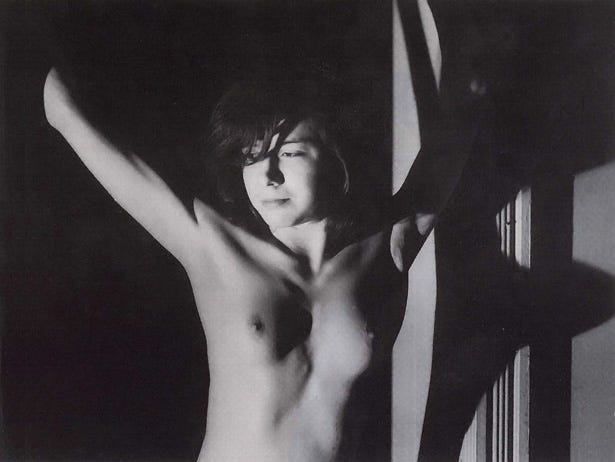
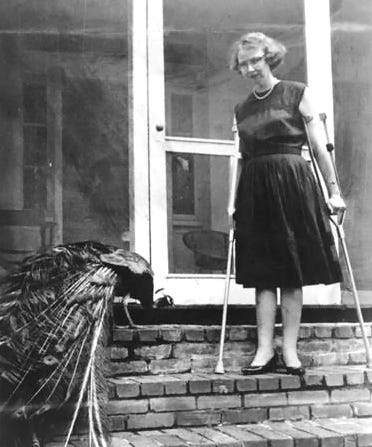

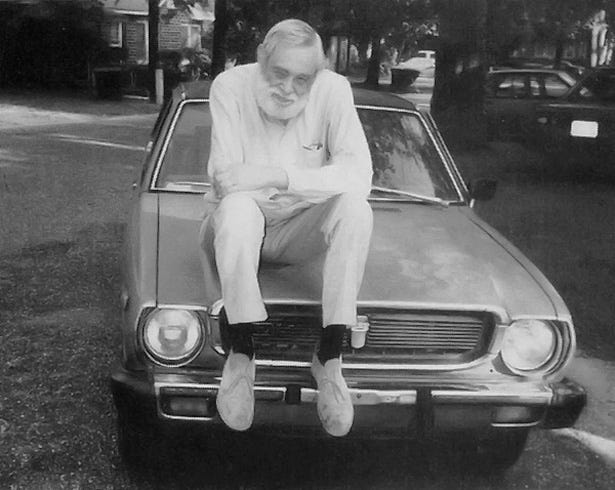
Enjoyed this thoroughly! What authors do with their hands in author photos is another worthy topic.